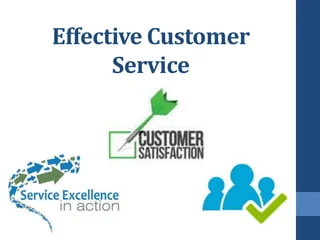Introduction
Customer service is the heartbeat of any successful business, and at its core is the concept of service levels. This article dives deep into the intricacies of customer service levels, exploring their significance, strategies for optimization, and the pivotal role they play in shaping the customer experience.
“Understanding Customer Service Levels”
Begin by defining customer service levels as the benchmarks and standards set by businesses to ensure the delivery of quality service to their customers. Explore how these levels encompass various aspects such as response time, issue resolution, and overall customer satisfaction.
“The Impact of Service Levels on Customer Experience”
Delve into the profound influence service levels have on the overall customer experience. Discuss how well-defined and meticulously managed service levels contribute to customer satisfaction, loyalty, and positive brand perception.
Core Components of Effective Service Levels
“Defining Clear Objectives”
Highlight the importance of setting clear and measurable objectives for customer service levels. Discuss how well-defined goals provide a roadmap for service teams, ensuring alignment with overall business objectives.
“Establishing Realistic Service Level Targets”
Explore the significance of setting realistic service level targets. Discuss the delicate balance between ambitious goals and achievable targets, ensuring that service levels are challenging yet attainable.
Strategies for Setting and Measuring Service Levels
“Identifying Key Performance Indicators (KPIs)”
Examine the crucial role of Key Performance Indicators (KPIs) in setting and measuring service levels. Discuss how metrics like response time, resolution time, and customer satisfaction scores contribute to effective monitoring and evaluation.
“Utilizing Technology for Measurement”
Discuss how technology plays a pivotal role in measuring service levels. Explore the implementation of Customer Relationship Management (CRM) systems, analytics tools, and other technologies that provide real-time insights into service performance.
Optimizing Response Time as a Service Level Metric
“The Significance of Rapid Response”
Emphasize the importance of response time as a critical service level metric. Discuss how swift responses contribute to customer satisfaction, demonstrating attentiveness and a commitment to addressing customer needs promptly.
“Strategies for Improving Response Time”
Explore actionable strategies for improving response time. Discuss the role of automation, streamlined communication channels, and efficient ticketing systems in reducing response times and enhancing overall service levels.
Achieving Efficient Issue Resolution
“The Art of Timely Issue Resolution”
Discuss the impact of efficient issue resolution on service levels. Explore how resolving customer issues promptly not only meets service level targets but also fosters trust and loyalty among customers.
“Strategies for Streamlining Issue Resolution”
Examine strategies for streamlining issue resolution processes. Discuss the importance of empowering service teams with the right tools, training, and authority to address and resolve customer issues effectively.
Balancing Efficiency with Quality in Customer Service
“The Dual Challenge of Efficiency and Quality”
Acknowledge the delicate balance between efficiency and quality in customer service. Discuss how organizations can optimize service levels by delivering swift resolutions without compromising the quality of customer interactions.
“Training and Empowering Service Teams”
Explore the role of training and empowerment in achieving this balance. Discuss how well-trained and empowered service teams contribute to efficient, high-quality interactions, ultimately elevating service levels.
Proactive Communication and Service Levels
“The Role of Proactive Communication”
Highlight the significance of proactive communication in maintaining service levels. Discuss how keeping customers informed about their requests’ status, potential issues, and resolutions enhances the overall customer experience.
“Strategies for Enhancing Proactive Communication”
Explore strategies for enhancing proactive communication. Discuss the implementation of automated updates, personalized communication channels, and proactive issue anticipation to exceed customer expectations.
Customer Feedback as a Measure of Service Levels
“The Feedback Loop in Service Levels”
Discuss the importance of customer feedback as a crucial measure of service levels. Explore how feedback provides valuable insights into customer satisfaction, areas for improvement, and the overall effectiveness of service initiatives.
“Leveraging Feedback for Continuous Improvement”
Examine how organizations can leverage customer feedback to drive continuous improvement in service levels. Discuss the implementation of feedback loops, regular surveys, and actionable strategies based on customer input.
Service Levels in Different Channels of Customer Interaction
“Omni-Channel Service Levels”
Explore the challenges and opportunities of maintaining service levels across various customer interaction channels. Discuss how businesses can optimize service levels in the era of omni-channel customer engagement.
“Tailoring Service Levels to Specific Channels”
Discuss the importance of tailoring service levels to specific channels. Explore how the dynamics of response time and issue resolution may differ in channels such as email, chat, phone, and social media.
Adapting Service Levels to Customer Expectations
“Aligning Service Levels with Customer Expectations”
Discuss the necessity of aligning service levels with evolving customer expectations. Explore how organizations can stay agile and responsive to changing customer needs, ensuring that service levels remain relevant.
“Flexibility in Service Level Agreements (SLAs)”
Explore the concept of flexibility in Service Level Agreements (SLAs). Discuss the importance of periodically reviewing and adjusting SLAs to accommodate changes in customer behavior, industry standards, and business goals.
Overcoming Challenges in Service Level Management
“Common Challenges in Service Level Management”
Acknowledge common challenges in service level management. Discuss issues such as resource constraints, unexpected spikes in service requests, and technological limitations that organizations may face in maintaining optimal service levels.
“Strategies for Overcoming Service Level Challenges”
Explore proactive strategies for overcoming challenges in service level management. Discuss the role of contingency planning, scalability, and ongoing optimization in mitigating potential obstacles.
Conclusion
In the complex tapestry of customer service, service levels emerge as the guiding principles that dictate the quality and efficiency of interactions. This comprehensive guide has navigated through the various dimensions of service levels, from understanding their significance to implementing strategies for optimization. As organizations continue to prioritize customer satisfaction, the mastery of service levels remains a key differentiator, ensuring that every customer interaction aligns with the high standards set by the business.
